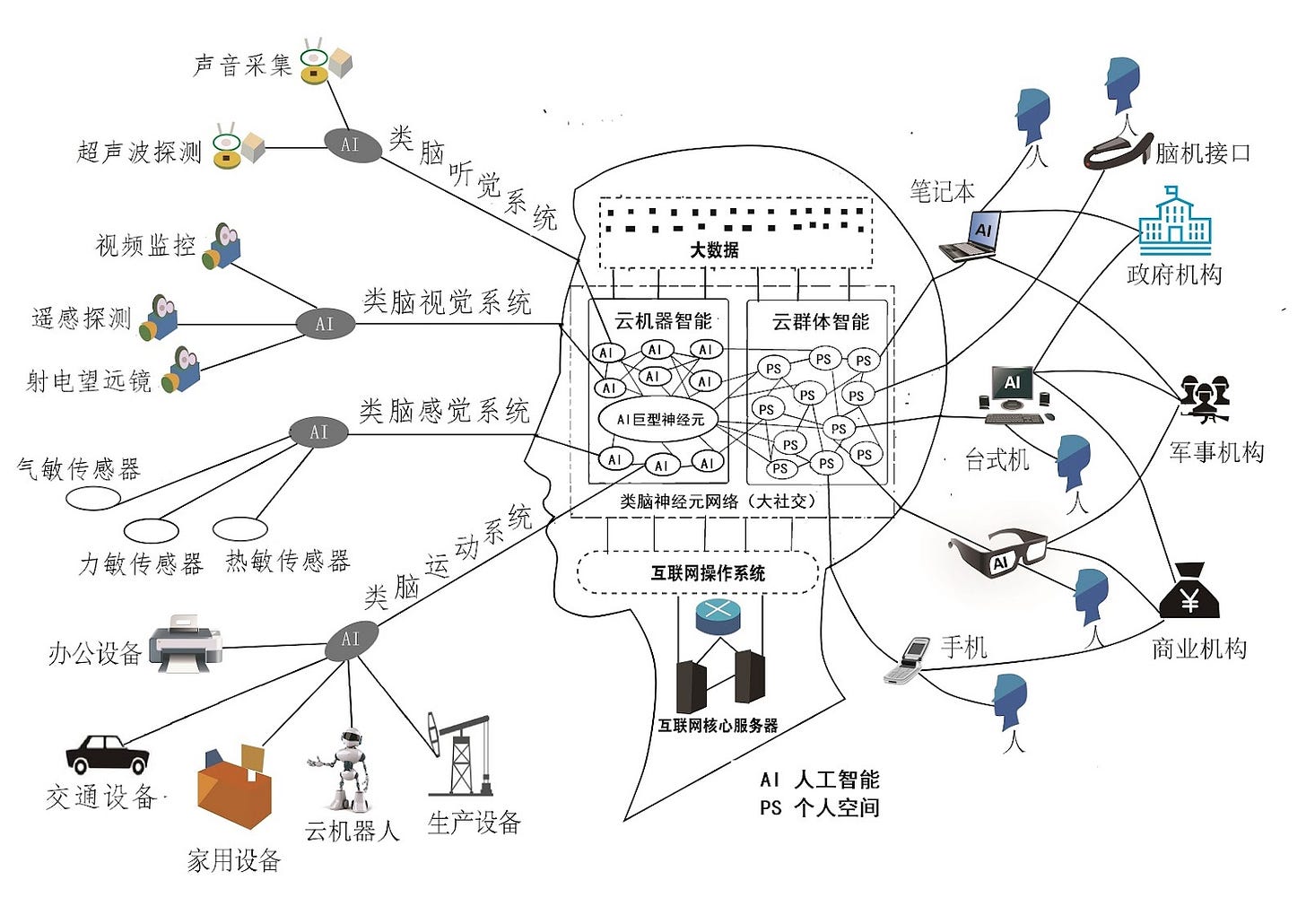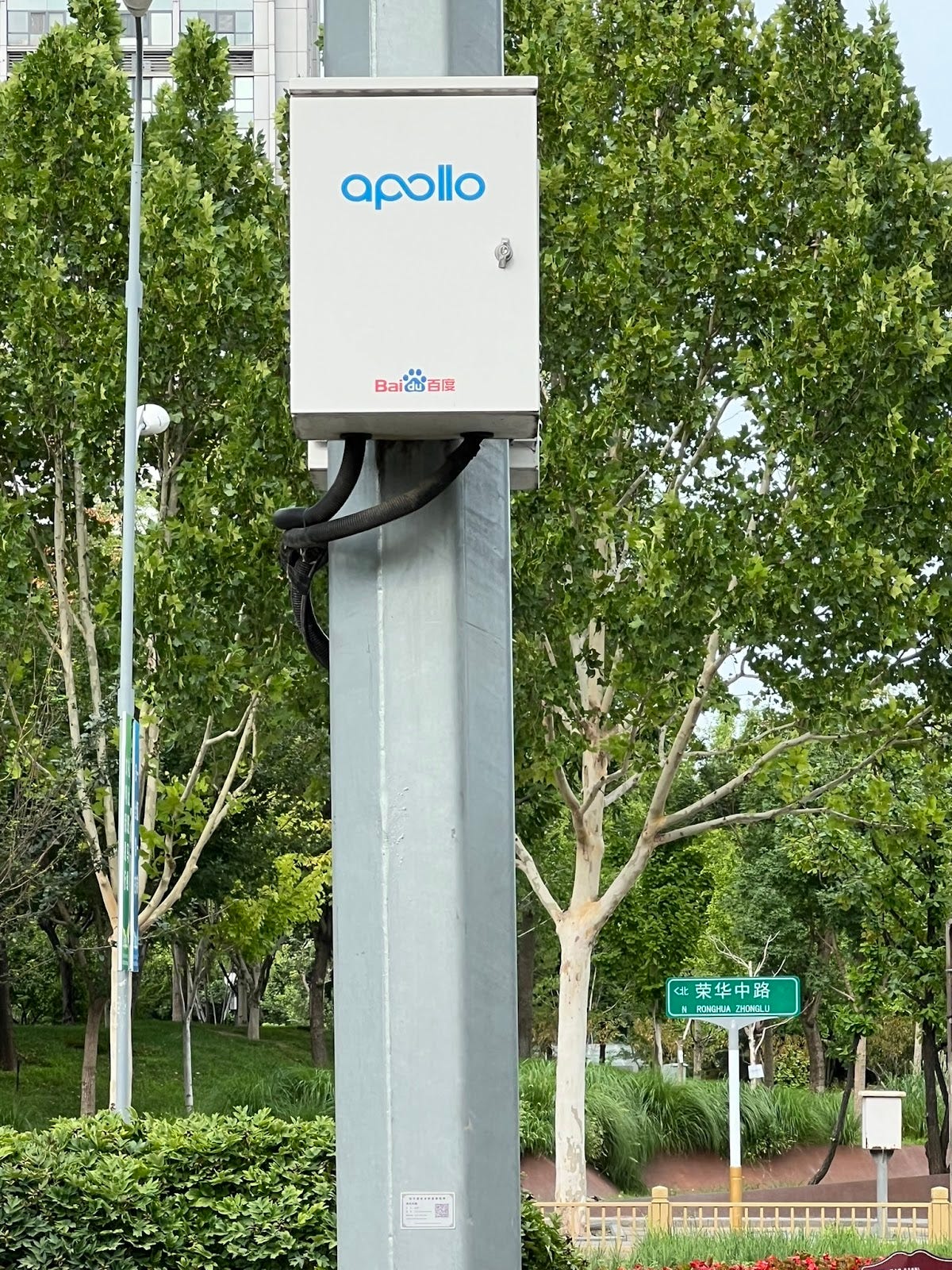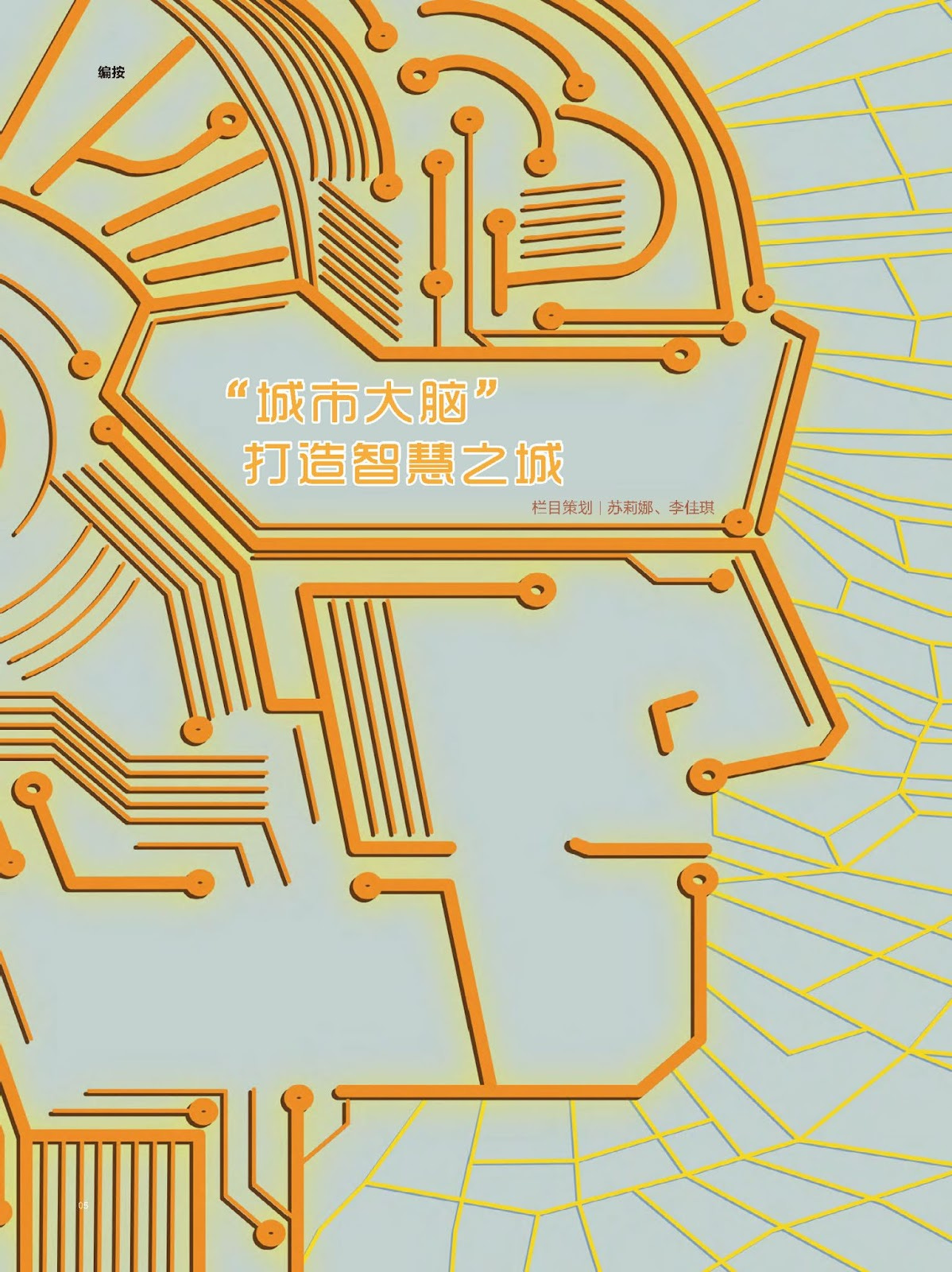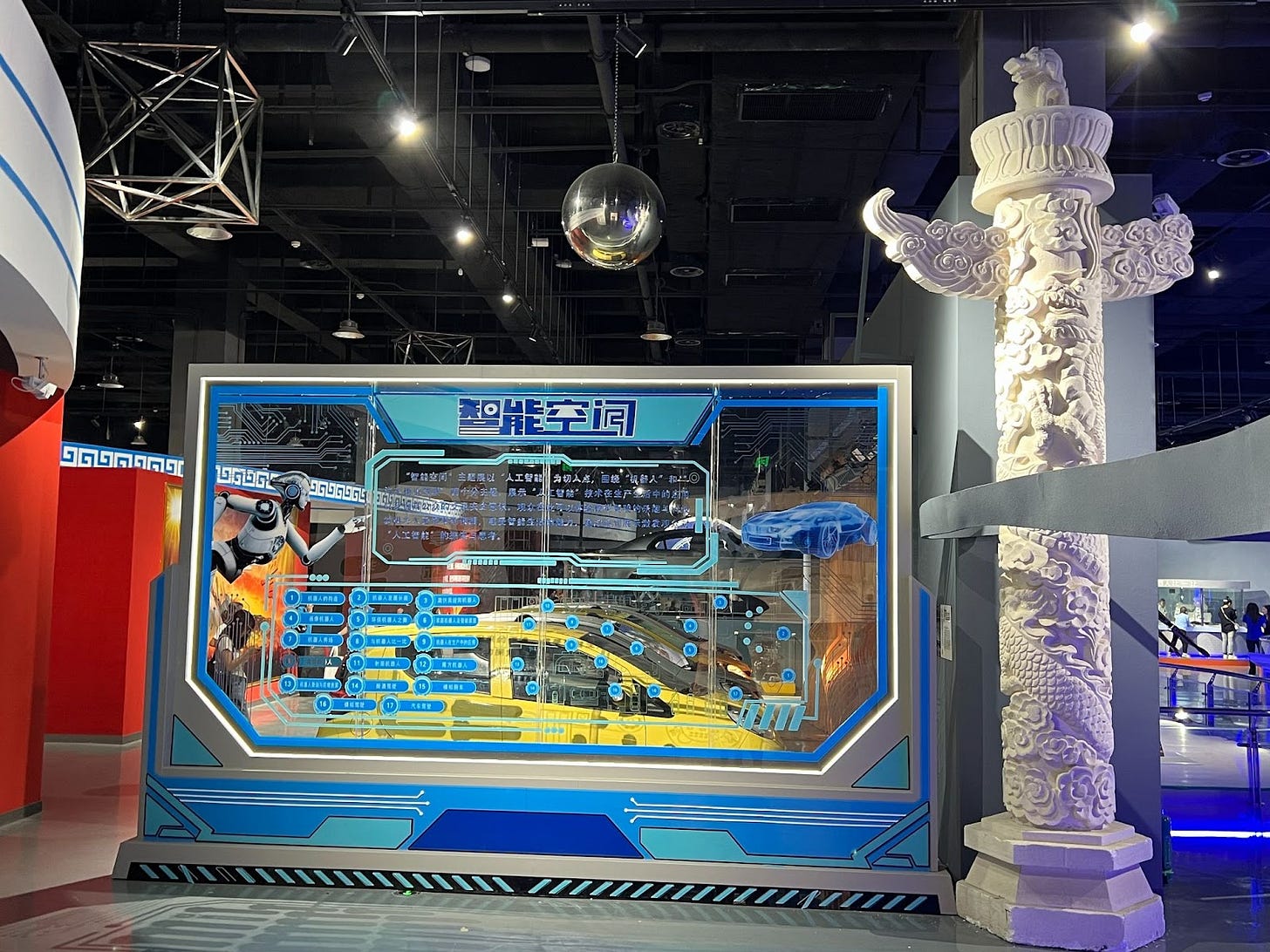China's Diverging AI Path
Covering Robots, AVs, and Policy
Today’s post is brought to you by 80,000 Hours, a nonprofit that helps people find fulfilling careers that do good. 80,000 Hours — named for the average length of a career — has been doing in-depth research on AI issues for over a decade, producing reports on how the US and China can manage existential risk, scenarios for potential AI catastrophe, and examining the concrete steps you can take to help ensure AI development goes well.
Their research suggests that working to reduce risks from advanced AI could be one of the most impactful ways to make a positive difference in the world.
They provide free resources to help you contribute, including:
Detailed career reviews for paths like AI safety technical research, AI governance, information security, and AI hardware,
A job board with hundreds of high-impact opportunities,
A podcast featuring deep conversations with experts like Carl Shulman, Ajeya Cotra, and Tom Davidson,
Free, one-on-one career advising to help you find your best fit.
To learn more and access their research-backed career guides, visit 80000hours.org/ChinaTalk.
U.S.-China competition in AI is seen as the defining technological rivalry of our time. Much of the analysis in this competition is premised on a zero-sum logic — we cannot let China get ahead of us in AI, so the logic goes, as this will inevitably mean the forfeiture of American technological and military primacy.
There is another possibility–China and the U.S. may develop different “varieties” of AI. For example, the U.S. advantages in cloud computing, software development, and openness to talent (tbd…) give it an edge in development of enterprise software and large language models (LLMs). However, China has clear advantages in manufacturing and infrastructure, which could offer an edge in what experts term “embodied AI”, or in Chinese jù shēn réngōng zhìnéng, 具身人工智能. Embodied AI systems interact with the physical environment through sensors (like cameras, microphones, touch sensors) and actuators (motors, limbs, wheels, etc.). Embodied Intelligence is shaped by a real-time, physical engagement with the world.
The central government recently included “embodied intelligence” in its work report, indicating the area as a key priority. Zhongguancun, Beijing’s hi-tech area, recently released its plan for embodied intelligence. A recent report by Georgetown’s Center for Security and Emerging Technology (CSET) focused on efforts in the city of Wuhan to embody “AI algorithms in real environments. Imbued with the Chinese Communist Party’s predefined values, the AI interacts with its natural surroundings, learning as it proceeds.” In this post, I explore some of the origins and implications of China’s interest in “embodied AI”, and then present a few examples of this approach in sectors such as autonomous vehicles, personal mobility, robotics, and the“brain-style” AI models being used for smart city operations. While the current push for embodied AI is part of a prevailing fever for AI globally, China’s priorities reflect long-standing beliefs in the use of technology for solving governance problems, and the need for physical infrastructure and manufacturing as key priorities for the country’s development.
Internet+, the Fourth IR: the Party’s Embrace of Embedded AI
In 2015, China’s Made in 2025 Plan drew the ire of many in the West for its ambitious goals of replacing foreign companies in China and dominating frontier industries like aerospace, biotech, and smart manufacturing. In the same year, Vice President Li Keqiang unveiled a vision for Internet Plus (互联网+), which called for applying data and AI to manufacturing, smart homes, intelligent vehicles, robotics, wearable devices, and more. The Internet+ Vision is seen as one of China’s earliest national strategies on the application of AI to industry, and underscored the degree to which policymakers in China saw digital data not merely as a sector in itself, but as an input for many other sectors. Li Keqiang’s Internet Plus was also inspired by Industry 4.0, a concept initially proposed in Germany in 2011 (Huda 2023), and which influenced World Economic Forum founder Schwab’s idea of the “Fourth Industrial Revolution” (Schwab 2017). Schwab popularized the idea of the Fourth Industrial Revolution, but the term itself emerged around 2011 at the Hanover Fair as part of Germany’s strategy to use digital technologies to maintain and deepen its edge in manufacturing. The 4th IR predicted the application of computing technology and the internet to a wider range of everyday life and objects. This encompassed “artificial intelligence, robotics, the Internet of Things, autonomous vehicles, 3D printing, nanotechnology, biotechnology, materials science, energy storage, and quantum computing.” The concept found resonance in China, a country that, like Germany, was arriving on the world stage as a major manufacturing power.
The idea of the fourth industrial revolution was embraced by top party leaders, including Xi, who saw the coming technological revolution as part of a critical period of changes in world history that China had the opportunity to lead. In 2017, Xi used the term “profound changes unseen in a century”, or bǎinián wèi yǒu zhī dà biànjú 百年未有之大变局, encompassing technological transformations but also a shift away from a U.S.-led global order. As Jin Canrong 金灿荣, Dean of the School of International Relations at Renmin University, put it in 2019, “After the fourth industrial revolution, the productivity of the East is likely to be ahead of the West, or at least a balance between East and the West will be achieved. This is the most important change among the three changes unseen in a century.” Jin goes on to note that, “If the 4th industrial revolution is, as Schwab described, ‘5G + the internet of things,’ then China is already leading this revolution, but I tend to be in the camp seeing this as more of a deepening of the 3rd (internet) revolution.” Nevertheless, Jin still saw China as having an advantage over the U.S. due to its production capacity. “The U.S. still has the best innovation capabilities, but the hollowing out of industry is a big problem. If you cannot turn innovation into products, it’s the same as a piece of waste paper.” Thus, Jin viewed manufacturing as a crucial component of China’s strength that would allow it to outcompete the U.S. Recently, Tsinghua Professor Tang Jie 唐 杰 repeated a view on China’s advantages as comprising “super-large population, rich application scenarios, and rapid iteration of the end-side ecosystem provide fertile soil for the rapid development of AI big models.”
Of course, the “4th industrial revolution” hasn’t played out entirely as Schwab or China’s leadership assumed. Around 2015, 5G and the “internet of things” were predicted to revolutionize everything. So far, 5G and the Internet of Things have proven less transformational than originally anticipated, but we are still early innings of what could be a longer story in the application of AI to other areas.
Governance: City Brains and other Brain-inspired AI
In addition to being home to Alibaba, the city of Hangzhou helped spawn the so-called “six little dragons”, 六小龙 which include DeepSeek. Hangzhou is also the site of one of China’s first successful “City Brains,” 城市大脑 — a smart city platform developed by a partnership of the city government with Alibaba’s Ali Cloud back in 2016. The platform was first deployed to help reduce traffic jams. A network of AI-enabled cameras, produced mostly by local firms Hikvision and Dahua, feeds information into a cloud system that gathers real-time information on traffic flows and accidents, and processes this information to adjust and optimize traffic lights across the city. The City Brain 3.0 integrates data from traffic lights, surveillance cameras, vehicle GPS, municipal records, public services, and IoT sensors. Alibaba has gone on to market its City Brain platform to cities around China and the world, and China has promoted the construction of City Brains around the country as a core component of the 2023 Digital China Plan. China’s 14th Five-Year Plan (2021-2025) calls for using “digitalization to boost urban and rural development and governance model innovation, build an urban data resource system, and promote the construction of urban data brains" (14th Five-Year Plan). Subsequent policies have followed the 14th Plan, including the 14th Five-Year Plan for National Informatization, which includes plans for a “ubiquitous, intelligent, connected digital infrastructure system”, comprising 5G, big data centers, and smart networks, for example.
The “city brain” concept dovetails with the established interest in using AI to improve governance. The PKU-Wuhan AI institute has apparently been developing a “large-scale social simulator” (大型社会模拟器). While the focus of these initiatives is on AI, they follow from a longstanding faith in systems thinking and technology to solve government administration problems. In the 1980s, the concept of cybernetics was embraced across a wide swath of scientists and leaders as the country turned away from the fervent ideology of the Cultural Revolution towards science and technology. The crux of cybernetics as developed by Norbert Wiener in the 1950s is information processing: “Cybernetics takes the view that the structure of any system engaged in communication or control must be analyzed in terms of the transfer and processing of information, whether the system be an electronic brain, a living organism, or a social institution.” Qian Xuesen 钱学森, a Chinese student of Wiener’s, helped build the PRC’s rocket force and other technologies in the 1950s after being forced to leave his professor position at Caltech in the wake of the Red Scare. In a 1978 article, Qian described cybernetics as a “technology of organizational management” (zǔzhī guǎnlǐ de jìshù 组织管理的技术). One of his protegees in cybernetic thinking, Song Jian 宋健, would go on to become a leading advocate for the one-child policy.

There are a number of research centers and projects working on various dimensions of “brain-inspired AI.” (类脑 Lèi nǎo AI) which aim to develop artificial systems based on models of human cognition and learning. Launched in 2016, the China Brain project focuses on the neural basis of cognitive function, brain-inspired AI, and the development of intelligent technologies that mimic the brain’s architecture and processes. The project is supported by the Chinese Academy of Science (CAS) Centre for Excellence in Brain Science and Intelligence, a consortium of laboratories at over twenty CAS institutes and universities, focusing on understanding neural mechanisms of cognition, developing brain-inspired intelligence technologies, and advancing brain disorder diagnostics and treatments. Beijing Institute for General Artificial Intelligence” (北京通用人工智能 研究院, BIGAI) was set up in 2020 in a joint effort of the city government, MIIT, and Peking and Tsinghua Universities. Peking University also helped launch the PKU-Wuhan Institute for Artificial Intelligence in 2022.
Training the Terrain: Autonomous Vehicles
After an hour-long subway journey southeast from Beijing’s city center, I arrive at a new gleaming glass-walled mall in the Yizhuang district. On first glance, the area is unremarkable and virtually identical to the myriad other “new areas” and new districts that have sprouted up on the edge of Chinese cities over the past few decades. But Yizhuang is not merely a typical new area, it’s also home to one of China’s most advanced autonomous vehicle testbeds, Beijing High-level Autonomous Driving Demonstration Zone (BJHAD). In 2020, China’s NDRC released its ’ “Intelligent Vehicle Innovation and Development Strategy, which called for “building a big data cloud control infrastructure platform for intelligent networked vehicles.” This oriented China’s approach to AV development around a principle of “vehicle-road-cloud integration” or 车路云一体化 chē lù yún yītǐ huà. In this model, pilot projects have been developed to deploy intelligent sensing and camera equipment on intersections within testing zones. The approach has been championed by an influential Tsinghua engineer, Li Keqiang 李克强 (same name as the former Premier), and endorsed by several of the country’s ministries and vehicle engineering associations. The idea has been around for a while — Andrew Ng, the Stanford-trained AI expert and former head of Baidu’s AI division, had championed what he called “training the terrain” back in 2016, just before he left Baidu in 2017 to found his own autonomous vehicle startup.
The crux of this approach is that, in addition to vehicles having onboard cameras and other equipment to navigate, intersections are outfitted with smart devices to communicate with vehicles in the area. As an autonomous car outfitted with sensing equipment approaches within 200 meters of such an intersection, the millimeter wave radio (MWR) detects incoming vehicles. Now, say there is a long truck in the left-hand lane. As the car approaches, the MWR and the low-latency cameras on the traffic pole detect the incoming car. Feeding the information rapidly into the mobile edge computing unit, the computer system processes the information. The latency, a measure of the time it takes for data to travel from one point to another, is within 200 milliseconds — around 70 milliseconds is how fast a human can react, so it’s not much slower than a human. Another car approaching the intersection from the perpendicular direction is also detected by the MWR and cameras on the other traffic pole, which also feed into the system. Using the information of incoming traffic, the mobile edge computing unit then communicates with the incoming car, which automatically begins to apply braking, slowing the car down before it reaches the intersection and averting a collision in the intersection.

There are problems with this approach. Intelligent intersections are costly to build and expensive to maintain. The safety benefits are relatively marginal for these “edge cases” that don’t occur often. Autonomous vehicle companies want their systems to work anywhere, not just where intelligent intersections are constructed. So why has China continued to pursue this infrastructure-centric approach? In the view of a former planner who worked for Baidu in Yizhuang, it's more of a political arrangement. “Think of it this way,” he said. “It’s a win-win for the government and Baidu. The local district government wants to attract automakers to invest here. They need to figure out how to provide a subsidy to Baidu. But they can’t buy the cars from them. So they purchase the software and computing infrastructure. Baidu has built an autonomous car factory nearby, so that counts for the local government’s economic development numbers.” The data collected in these “pilot zones” can also be used by the local government, whereas in infrastructure-independent scenarios, most of the data on autonomous vehicle operations remains with the company, such as Tesla or Waymo in the U.S. Foreign companies operating in China, such as Tesla, have been required by regulators to store all data from their operations in China, and refrain exporting sensitive data out of the country to comply with China’s strict cybersecurity laws.
A former Vice President of Baidu’s AV division, Wu Shulin 吴书林, recently founded a startup called Freego (正奇智能技术公司), focused on autonomous personal micro mobility. When bikeshare startups arose in China, they scaled quickly but also led to problems such as piles of misplaced or broken bikes cluttering city sidewalks. These systems also have problems in matching supply and demand, for example, how to get bikes to areas when they are needed most. If personal mobility devices were equipped with autonomous driving features, they could automatically return themselves to areas of higher demand after a user finishes a trip. The company is starting with automated wheelchairs, which are regulated as health devices in China and therefore require less permitting than vehicles. But they also have a larger ambition of expanding into a range of personal micro mobility devices such as scooters, e-bikes, or micro vehicles.

In their office in a startup park on the southwestern outskirts of Beijing, the founder animatedly showed me a diagram of an iterative loop in which devices are trained in real environments, continuously collecting new data on a variety of terrains, environments, and situations they encounter. Each type of device would collect different sorts of data, but collectively, this helps train a general model for navigating a variety of environments, such as climbing up staircases, navigating on sidewalks, or through crowded interior spaces.When I asked what the greatest obstacle to implementing their vision is, the founder replied, “It’s not a lack of government support or policy, but it's really the lack of high-quality AI software engineers.” (Interview, Beijing, 2024).
Robotics
Robots are seemingly everywhere in China today — running marathons, boxing each other. Unitree (宇树科技), China’s leading humanoid robotics company, released robotic dogs that became a social media sensation. Robotics is one of the most promising areas for deployment of “embodied AI” and one in which China already has a commanding position. China operates the world’s largest stock of industrial robots, accounting for over 50% of the global total. Robotic cooking machines have been seen in China for some time, tossing bowls of noodles. So what’s different now? According to Grace Shao, “embodied AI robots are trained on real-world data that uses reinforcement learning and they have developed the ability to “think. Recently, the Huisi Kaiwu platform was unveiled in Beijing as the world’s “first general embodied intelligence platform” for interfacing with robotics and other devices. The idea is that robots could be programmed and customized through this platform to handle specific tasks. The project is overseen at the Beijing Innovation Center of Humanoid Robots, jointly funded by the Ministry of Industry and Information Technology (MIIT), the Beijing municipal government, and other private firms and research institutions. In Shenzhen, Huawei (Shenzhen) Global Embodied Intelligence Industry Innovation Center began operation in 2024 and has cooperation with Shenzhen-based robotics firms Leju Robotics, Zhaowei Electromechanical, and Daju Robotics. Leju’s humanoid robot Kuafu (夸父) apparently offers 5G compatibility, which would facilitate data collection and training of robots for industrial applications.
Implications of Embodied AI with Chinese Characteristics
Diverging Models of AI Development, and bifurcation in global AI trajectories: The U.S. centers on abstract, cloud-based intelligence (e.g., LLMs), while China develops AI tightly integrated with physical systems and infrastructure. This divergence has implications for technological standards, ethics, and the global diffusion of AI technologies.
Infrastructure as an Advantage/Differentiator: China's infrastructural focus enables deployment of AI in real-world contexts at scale, especially in mobility, urban governance/management, and robotics. This presents a comparative advantage not often captured in typical U.S.-China tech rivalry narratives.
Legacy of Cybernetics and Systems Thinking: The enduring influence of cybernetic thought — from Qian Xuesen to current smart city projects—reveals a unique continuity in how China views technology as a tool for social coordination and governance.
Human Capital Bottlenecks: Despite policy support, China faces challenges in high-end software and algorithmic talent. The article notes concerns about the availability of top-tier AI engineers, which may limit scalability of embodied AI initiatives.
What can the U.S. learn from China’s approach to AI? So far, U.S. application of AI has focused largely on LLMs and application of AI in enterprise software. This means AI could be monopolized by tech platforms like Google, Facebook, Microsoft, and OpenAI. AI is being embraced across a wide array of sectors. Diffusion of embodied AI could even make efforts to reshore manufacturing more feasible, with the caveat that it would employ fewer workers and offer fewer well-paying jobs. Conversely, a failure to incorporate embodied intelligence could mean American manufacturing becomes even less competitive with China’s increasingly advanced factories.
Subscribe to Sinocities below!




